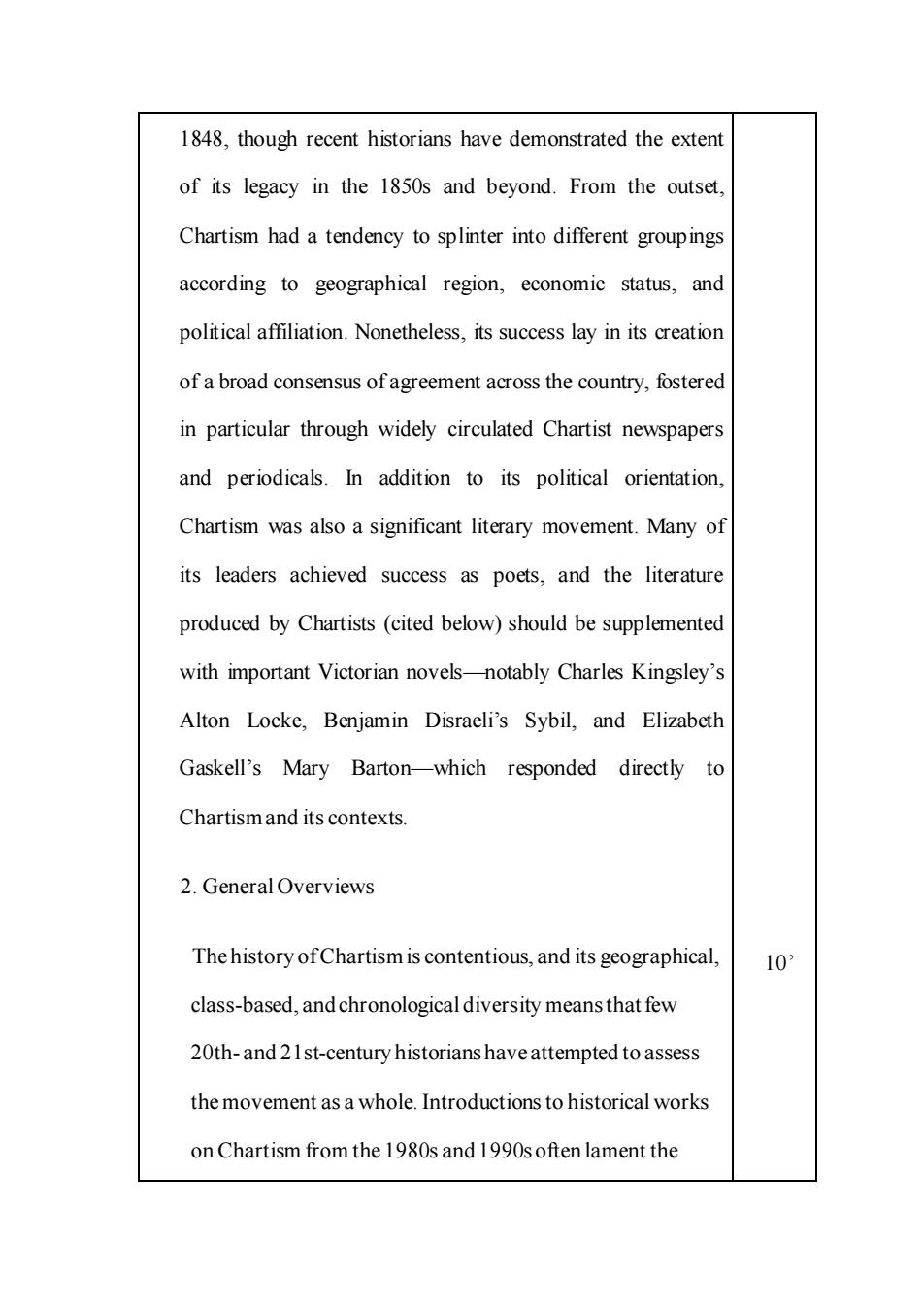正在加载图片...

1848,though recent historians have demonstrated the extent of its legacy in the 1850s and beyond.From the outset, Chartism had a tendency to splinter into different groupings according to geographical region,economic status,and political affiliation.Nonetheless,its success lay in its creation of a broad consensus ofagreement across the country,fostered in particular through widely circulated Chartist newspapers and periodicals.In addition to its political orientation, Chartism was also a significant literary movement.Many of its leaders achieved success as poets,and the literature produced by Chartists (cited below)should be supplemented with important Victorian novels-notably Charles Kingsley's Alton Locke,Benjamin Disraeli's Sybil,and Elizabeth Gaskell's Mary Barton-which responded directly to Chartismand its contexts 2.GeneralOverviews The history ofChartism is contentious,and its geographical, 10 class-based,andchronological diversity meansthat few 20th-and 21st-century historianshaveattempted to assess the movement as a whole.Introductions to historical works on Chartism from the 1980s and 1990s often lament the 1848, though recent historians have demonstrated the extent of its legacy in the 1850s and beyond. From the outset, Chartism had a tendency to splinter into different groupings according to geographical region, economic status, and political affiliation. Nonetheless, its success lay in its creation of a broad consensus of agreement across the country, fostered in particular through widely circulated Chartist newspapers and periodicals. In addition to its political orientation, Chartism was also a significant literary movement. Many of its leaders achieved success as poets, and the literature produced by Chartists (cited below) should be supplemented with important Victorian novels—notably Charles Kingsley’s Alton Locke, Benjamin Disraeli’s Sybil, and Elizabeth Gaskell’s Mary Barton—which responded directly to Chartism and its contexts. 2. General Overviews The history of Chartism is contentious, and its geographical, class-based, and chronological diversity means that few 20th- and 21st-century historians have attempted to assess the movement as a whole. Introductions to historical works on Chartism from the 1980s and 1990s often lament the 10’